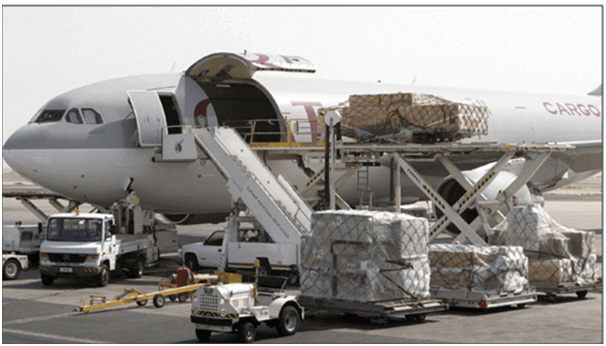When supervising the fresh food department, it requires close attention to some crucial considerations. Such factors include sourcing and shrink reduction. In retail, fresh categories consist of fruits and vegetables, meat, fish and dairy goods. These items typically account for up to 40 percent of the grocery chains’ revenues and are strong drivers of store traffic and customer loyalty.
Table of Contents
The Need for Global Sourcing
Fresh products have always been extremely difficult to manage due to price instability. Suppliers are fragmented, items are perishable and fragile, and the replenishment and quality-control procedures are very tedious. In addition, with increasing consumer demand, retailers are offering a wide range of fresh products. This leads to having to handle many items that have different temperatures and handling requirements.
With such challenges, many retail chains are struggling to achieve a satisfying margin level in their fresh departments. With global sourcing, business works to find the most cost-effective site for manufactured product, fresh fruits and vegetable. This includes identifying locations that are situated in a foreign country. The aim of choosing global sourcing is that suppliers can learn how to succeed in a new market, obtain a new and cheaper item to supply to the markets.

The Five Stages for Global Sourcing
- Stage 1: Initial Research – Information Gathering and Investigation
In this stage, the company identifies its essential and non-essential operational activities, evaluates their customers and market needs as well as identifying their competitors. This is to develop the company’s business objectives, prospective market and brand positioning.
- Stage 2: Market and Supplier Evaluation
In this stage, the company develops a detailed list of supplier selection benchmarks. This will be used to select the company’s most appropriate suppliers that meet their requirements. Request for information (RFI) will be sent out to the shortlisted suppliers.
- Stage 3: Selection of the Supplier
In this stage, a final list of suppliers is selected based on the result of the RFI sent and the negotiation for the products will be carried out which will eventually lead to a supply agreement. An implementation schedule timeline will then be planned for the various selected supplier.
- Stage 4: Implementation
A performance analysis schedule should be established to outline the activities of the implementation process. Procurement team should be the one taking charge in this stage. Any expected internal and external results from the suppliers need to be documented. Periodic measurement and reporting of the performance must be conducted.
- Stage 5: Performance Monitoring
The performance of the suppliers such as the resources and processes of the supplier needs to be measured regularly and report accordingly. This is to ensure that the most efficient procurement process is well-maintained to adapt to the changing market environment.

Key Objectives of Global Sourcing
- Cost – The key objective of product sourcing strategy is to take advantage of the cheaper labour costs in the overseas countries. Other additional costs that need to take note of are the broker fees, freight charges, taxes, insurance, duties and bank fees which are not factors in domestic transactional costs.
- Laws – The buyer and supplier should consider what body of law is to be applied in their contractual agreement. Examples of the body of law will be the buyer’s country’s law, the supplier’s country’s law or the law that is applicable through a signed agreement between both parties’ countries.
- Currency – The currency that both buyer and supplier will be dealing with. Some buyers might want to transact in their own currency due to simplicity. However, the currency decision is dependent on the perceived strength of the currency over the period between agreement and supply and eventual payment.
- Lead time – Global purchases have a longer lead time than domestic purchases. This is due to slower overseas travel unless air travel is used. Also, there is an additional time taken in the customs clearance process, which are not required in domestic purchases.
- Culture and language – When the purchaser is not familiar with the culture and language of the supplier, the risks of misinterpretation, miscommunication and offensive/awkward encounters will considerably increase.
- Transportation – Domestic sourcing usually involved the use of a single mode of transportation. While global sourcing normally includes many modes of transport such as combining air or sea transportation with road transport to bring products from the supplier.
- Methods of payment – In global sourcing, a letter of credit is commonly used for payment, which requires the cooperation of the banks of both the supplier and buyer.
Fruit Retail Distribution
As a fruits and vegetable distributor, it is required to keep a stable supply of first-rate produces that delight the customers, solve their problems, and meet their needs which required a major effort. This involved from knowing what consumers want to buy and what they can buy to finding the right places to source these products. Perishable products such as salad and fruits are typically transported by air due to its short shelf life. They are then transported from the packing facility to the retail stores in refrigerated vehicles.
The full content is only visible to SIPMM members
Already a member? Please Login to continue reading.
References
Addwise, (2020). “FSSAI Food Packaging & Labeling”. Retrieved from https://addwise.co.in/food-safety/fssai-food-packaging-labeling/, accessed 11/09/2020.
Buck, R. & Minvielle, A., (2013). “A Fresh Take on Food Retailing”. Retrieved from: https://www.mckinsey.com/~/media/mckinsey/dotcom/client_service/retail/articles/perspectives%20-%20winter%202013/3_fresh_take_on_food_retailing_vf.pdf, accessed 5/09/2020.
Oliver Wyman. (2018). “Disruption in fruit and vegetable distribution”. Retrieved from: https://www.oliverwyman.com/content/dam/oliver wyman/v2de/publications/2018/Feb/Fruit_Logistica_Trend_Report_2018.pdf, accessed 11/09/2020.
See Yin Qian, DPSM. (2020). “Key Stages to Develop a Global Sourcing Strategy” Retrieved from SIPMM: https://publication.sipmm.edu.sg/techniques-effective-global-sourcing-strategy/, accessed 15/09/2020.
Spendmatters, (2019). “Stages of a Global Sourcing Strategy”. Retrieved from: https://spendmatters.com/2015/09/15/stages-of-a-global-sourcing-strategy/, accessed 05/09/2020.
Wang Le, DPSM. (2020). “Sourcing Criteria for the Confectionery Industry” Retrieved from SIPMM: https://publication.sipmm.edu.sg/sourcing-criteria-for-the-confectionery-industry/, accessed 13/09/2020.

